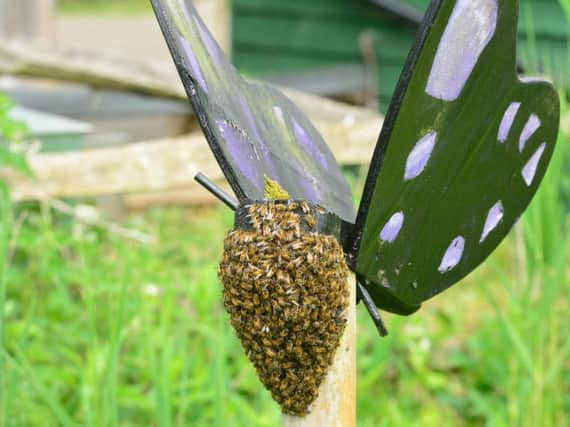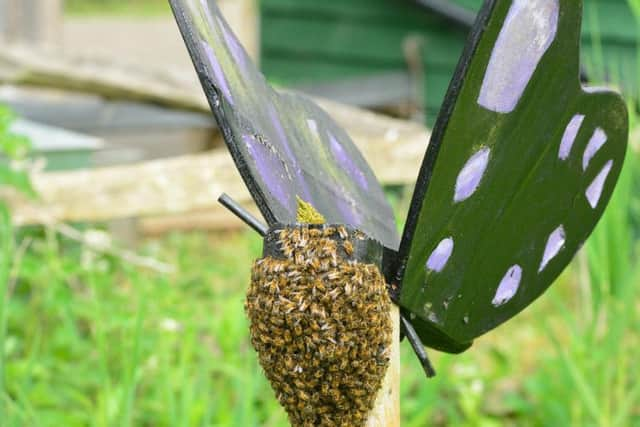Swarms expected in July


The first swarm spent a few days on a fence rail, while the second swarm appeared as a beard of bees on the large wooden butterfly figure in the meadow.
Worthing Beekeepers Association helped remove the first swarm, as it was beside a footpath used by visitors.
Advertisement
Hide AdAdvertisement
Hide AdVolunteer Peter Ashley, an ex-beekeeper, said: "Honeybees usually swarm in July. If you find a honeybee swarm in your garden, don’t approach it or try to scare the bees away. They will eventually move off when their scouts return.”


When honeybee colonies grow too large, a swarm of bees will leave to start a new colony. The swarm will settle and send out scouts to look for a new nesting site. This usually happens midsummer but the mild winter at Arundel meant the colony there had a high survival rate and quickly grew too large for the bug hotel.
Paul Stevens, grounds manager, said: “We were surprised to see the second honeybee swarm as we weren’t seeing a lot of activity from the bug hotel after the first swarm left. It has been a great opportunity for our visitors to see nature in action.”
WWT Arundel Wetland Centre, in Mill Road, Arundel, is open from 9.30am to 5.30pm, seven days a week.